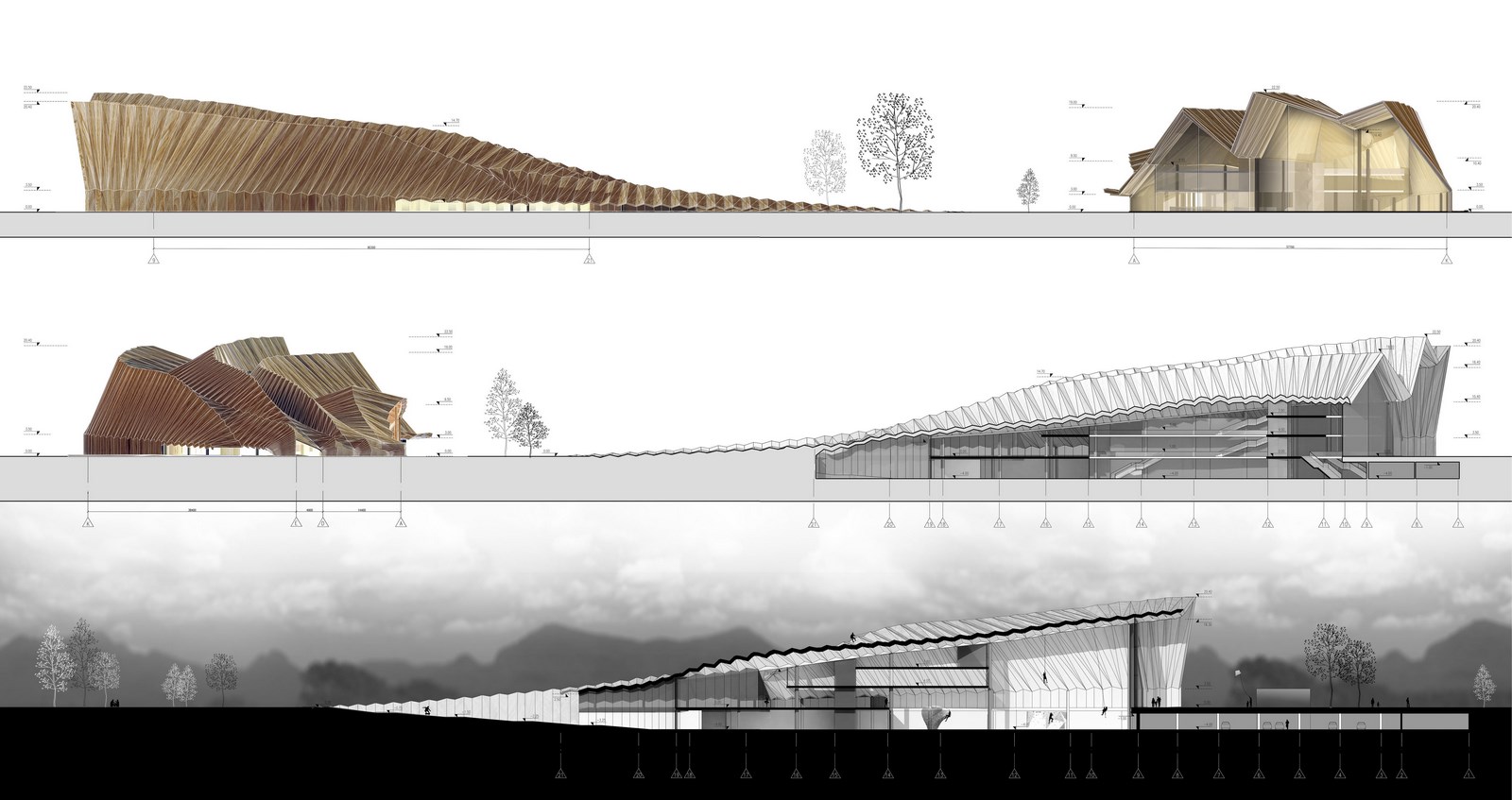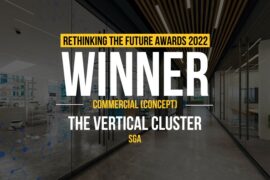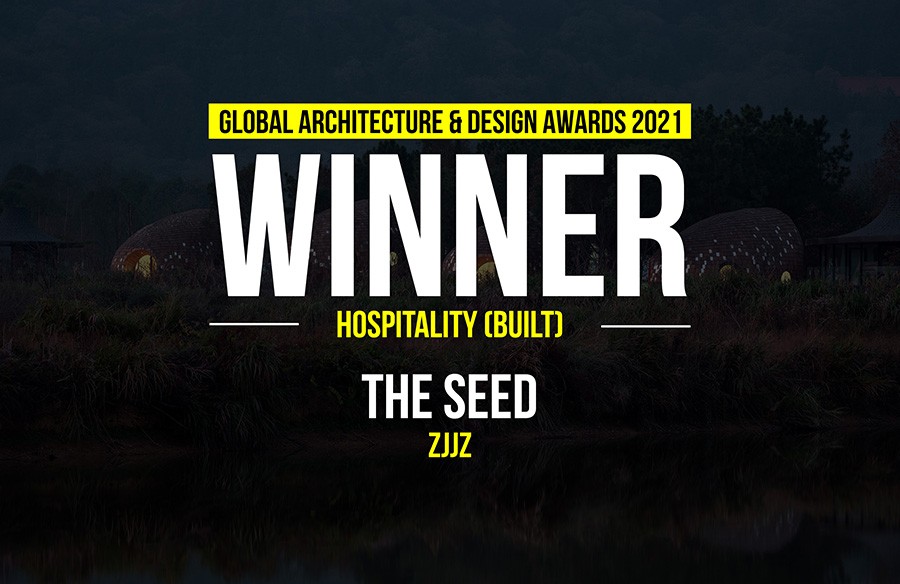In this project, architectural language is driven by algorithmic design approach to create a two-dimensional folded plate structure with a set of design constraints and apply form-finding methods to sculpt it. The geometry is found by manipulating certain parameters in accordance to the programmatic needs, building limitations and formal expression. For that, “Processing” was used as a form-steering tool (together with “Rhino” and “Grasshopper” and library “punktiert”), the code was created and tested during the creative workshop “From Landscape to Roofscape”
together with Daniel Köhler and Rasa Navasaitytė. The use of computational tools proved to be crucial factor to successfully implement the design proposal, providing it with geometrical order and physical logic.
Architects: Vestarte Lina
Status: Concept



LOCATION
The site is located just a few kilometers away from the central part of Sofia city, Bulgaria. It is limited by commercial area in the north and south-east, overlooking residential street in the west and marking the limit of the residential quarter “Mladost 3”. The projected site area is 22 000 sq. m., however only a half of this site is intended for possible building, the other half belongs to the city park territory and must be planed as a green recreational area. The new building is to become an attractive center of entertainment as well as the headquarters of “Walltopia”, the global leader in production of artificial climbing walls.


CONTEXT
The project should not only create a new point of attractions to the “Walltopia” guests, but also provide engaging public areas for the residents of the neighboring residential quarter. The project should also be eye catching from different perspective angles: passing by a car (planned connection in the north), from nearby (the building internal spaces and nearby outdoor spaces), and from a height (there are nearly two times higher buildings in a surrounding area). Pragmatic USSR modernistic “bedroom” districts dominate in the context of the site, therefore the new architectural solution should be both sensitive and unique, able to “wake” the social life of a neighboring block by becoming a landmark building.

CONCEPT
The conceptual focus in “Collider ctivity Center” is the activation of building envelope while lessening the distinction between figure and ground. This objective is achieved by architectural pursuit to handle the plot area (both the landscape and the building) as harmoniously interacting whole, rather than establishing separate organizations within it. While the whole site area obeys to the rules of the same structural system, certain contextual factors (main connection lines, landscape, urban context) are affecting this structure in different ways. One of the most prominent constituents is the city park boundary, dividing the plot into two areas of different activities: park – calm, building -intensive. The interactions between the elements within the structure vary in those two parts dramatically, while the structure itself stays unified. This approach allows building volume to be “grown up” from the land surrounding it, and by doing that, a morphogenetic harmonious whole is being created between the landscape and the roof.


LINA VESTARTE
Lina Vestarte has graduated her bachelor’s in architecture at Vilnius Academy of Arts, Lithuania. During her studies she has acquainted herself with algorithmic modelling strategies while participating in international workshops organized by Studio Zaha Hadid graduates from University of Applied Arts Vienna. Lina later decided to pursue her master’s degree by joining Center for Information Technology and Architecture (CITA Studio) at the Royal Danish Academy of Fine Arts (KADK) in Copenhagen, further deepening her understanding in the use of digital technologies and innovative methods in architectural design. Lina has extensive experience working within international teams in various countries, such as COOP HIMMELB(L)AU office in Vienna (Austria), POLYFORM office in Copenhagen (Denmark), PU-PA architects in Vilnius (Lithuania) and she considers computational tools as crucial constituents to her architectural practice.





